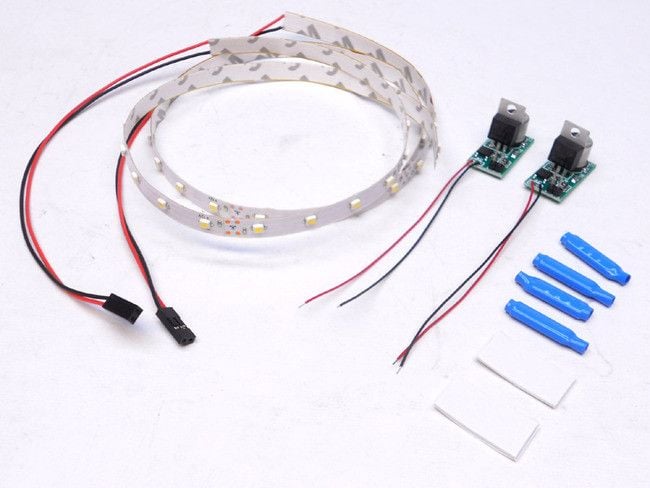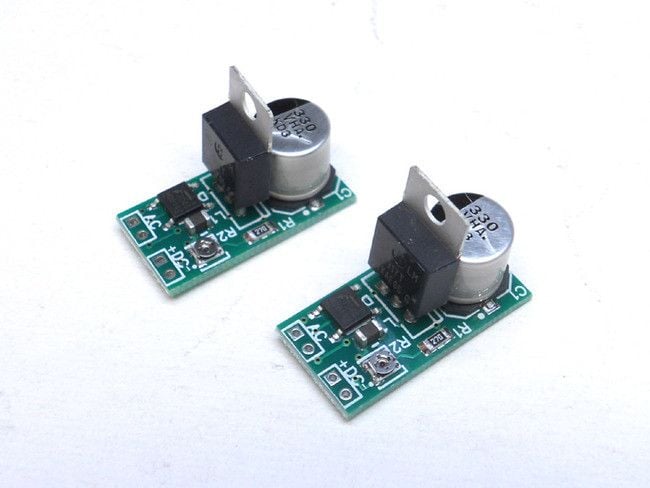Looking for a circuit design to build and install in rolling stock with incandescent interior lighting.
Thanks!
|




|
Looking for a circuit design to build and install in rolling stock with incandescent interior lighting.
Thanks!
Replies sorted oldest to newest
Al,
I'm confused. Do you have flickering lights in passenger cars and you want to get rid of the flicker? If that is the case, talk with Gunrunnerjohn on this forum. He sells an LED lighting package that you retrofit into your passenger cars. The hard work is already done. Just open your wallet!
Chris
LVHR
Since you are willing to build, here is a thread you might find interesting.
grj-s-original-diy-constant-current-pax-car-lighting-module-files
@lehighline posted:...
I'm confused. Do you have flickering lights in passenger cars and you want to get rid of the flicker?
...
What he said. Or do you want to add flicker? For example there have been threads about adding flicker to simulate candle-lights in dining cars or pre-electric interior illumination. Or adding flicker to subway car interior lighting to simulate the intermittent loss of 3rd-rail power.
But presumably you're trying to get rid of flicker and you want to stay with incandescent/filament bulbs (vs. convert to LED). Rather than a game of 20 questions, perhaps elaborate on exactly what you're trying to do.
Some of the 20 questions to jump start the process might include
Do you have an inclusive list of the lighting configurations for the various cars you're trying to convert? Do any have bulbs where screw/bayonet type sockets are riveted to the chassis (so the metal chassis is electrically connected to the bulb)? How much space is available? Command-control track voltage or conventional operation? Are you comfortable working at the component level (resistors, capacitors, diodes), wiring, soldering, etc.
What is your budget?
I want to get rid of flickering lights in rolling stock that have incandescent lighting. My system operates in command control, Lionel Cab2.
If the flickering lamps are wired such that they do NOT have a return path directly (mechanically) through the frame of the car, then you can use the following method. (If they are connected mechanically to provide the return, you will need to isolate the return of each lamp and provide a separate return wire for each.)
The method involves taking the hot and return leads (roller and frame) and using them as the A-C input to a full-wave bridge rectifier. This is accomplished by soldering four ten-cent diodes into the required bridge, or buying a one-dollar ready-made bridge. The D-C output of the bridge is connected in parallel (plus to plus, negative to negative) to a 30 volt, 1000 uFd electrolytic capacitor. The output of this circuit powers the lamps. The cap acts as a filter, or short-term storage battery, smoothing out the peaks and valleys of electricity as the train moves down the track. The scheme only works with D.C., hence the need for the bridge rectifier.
I'll wager that this explanation has appeared many times in this and other forums, so use the search feature for other opinions on the theme.
LEDs are the way to go. You gut the old lighting, loose one of the truck pickup assemblies, solder the LED lighting supply to the strip and remaining pickup, then attach everything inside the car with double sided tape. The power supply has a capacitor or 2 to keep the lighting constant. No more flicker, and a greatly reduced power load. Plus, with one less pickup, the car rolls easier.
Chris
LVHR
The problem with trying to get rid of flicker with incandescent lights is the power consumption. You can do it, but it requires some really large components! If you add a rectifier and a large capacitor, you can buffer the incandescent lights. However, depending on the lighting power requirements, it will be a large or very large capacitor! If you go the LED lighting route, you end up with much more even lighting that is flicker-free and also has intensity adjustment capability. Did I mention that you also cut the power requirements by 90-95% as well?
You can go with the turn-key kit that has everything you need to light two passenger cars: Passenger Car LED Lighting Kit

You can also just use the regulator module and supply your own LED strips, if you don't mind a little soldering, this cuts the price in half: LED Lighting Regulator

Thanks to everyone for the guidance and recommendations.
Now you have a range of prices you can pay ( 10 cents to $40) to get ride of flickering lights in passenger cars.
Charlie
Access to this requires an OGR Forum Supporting Membership
